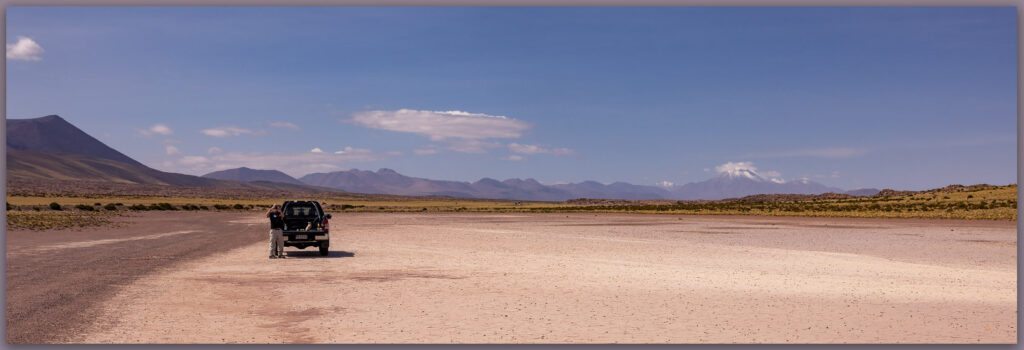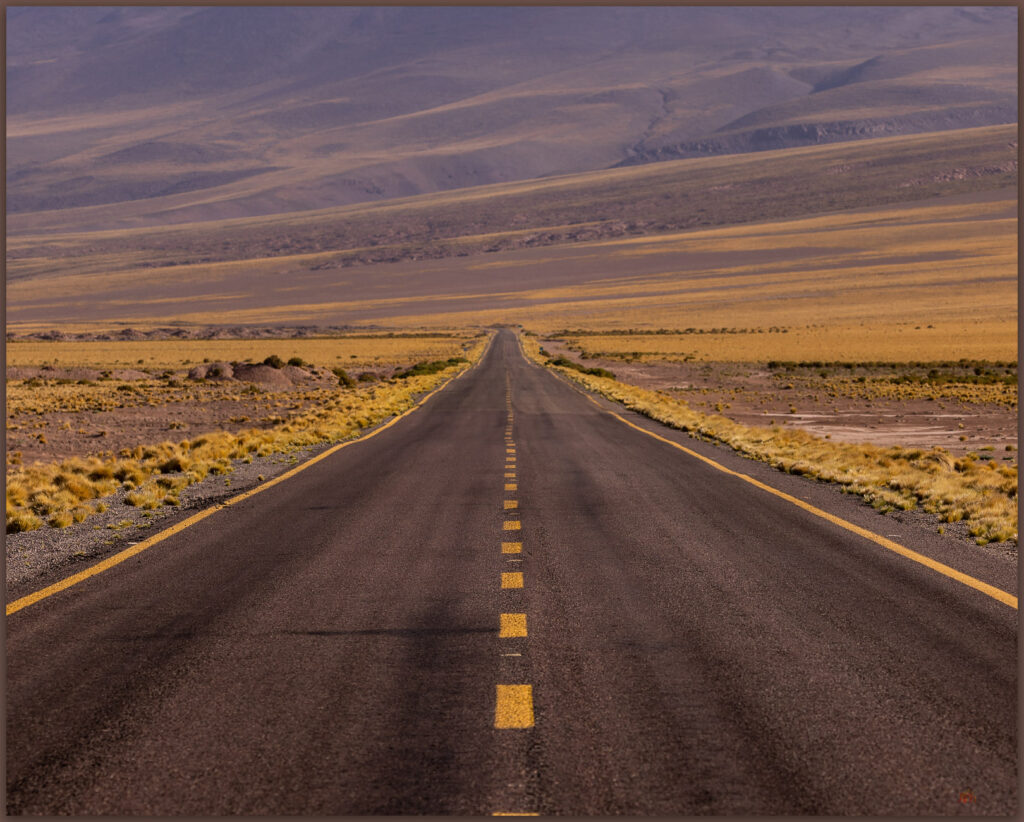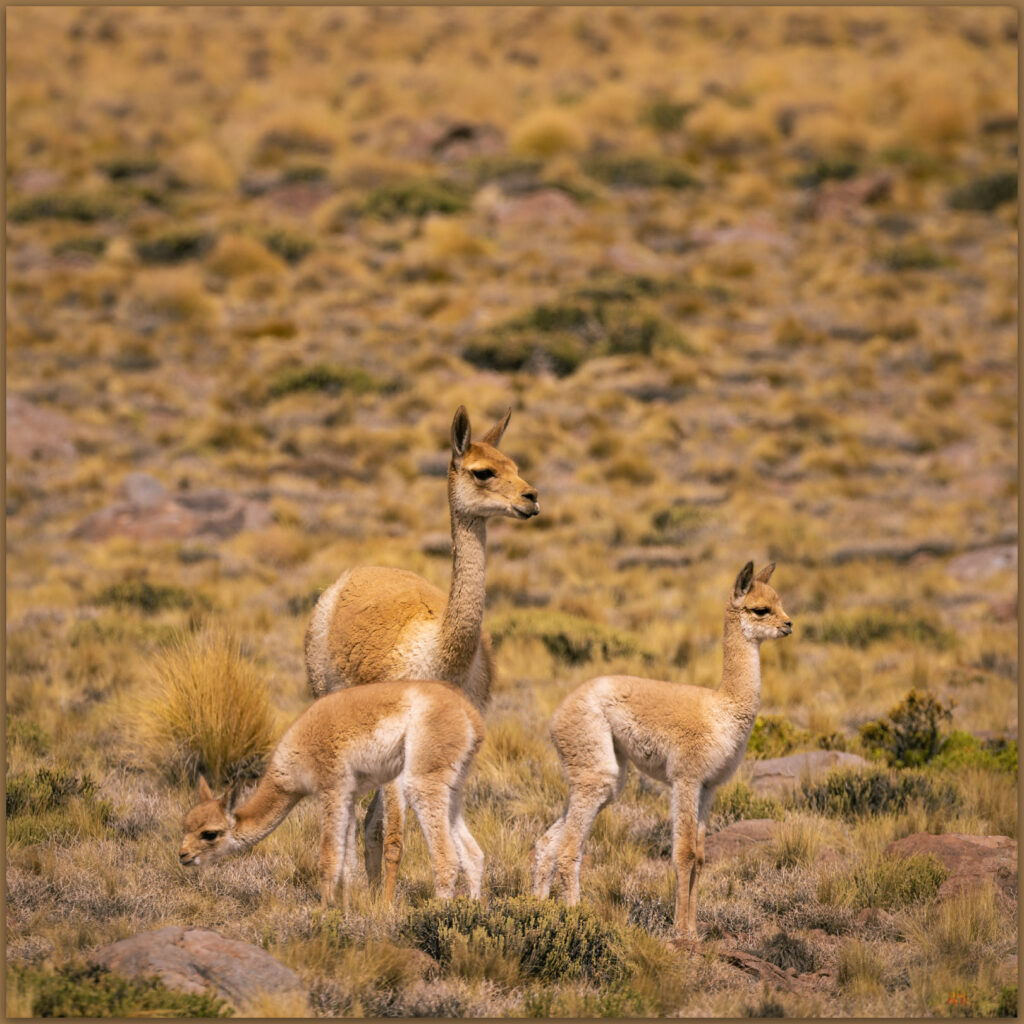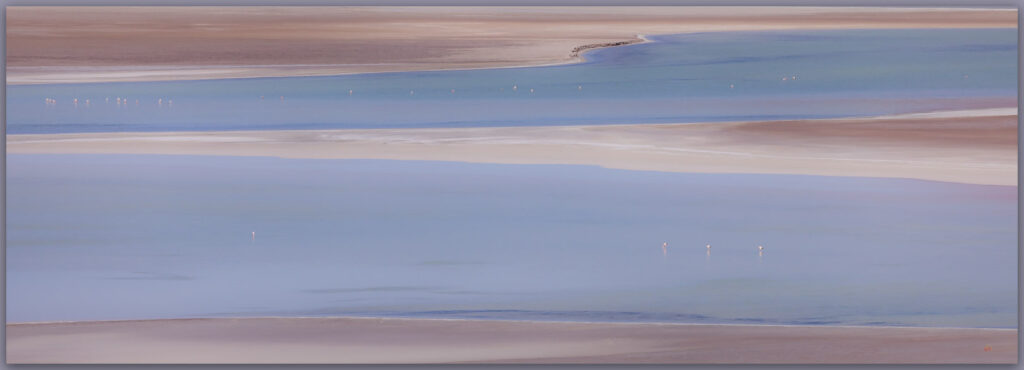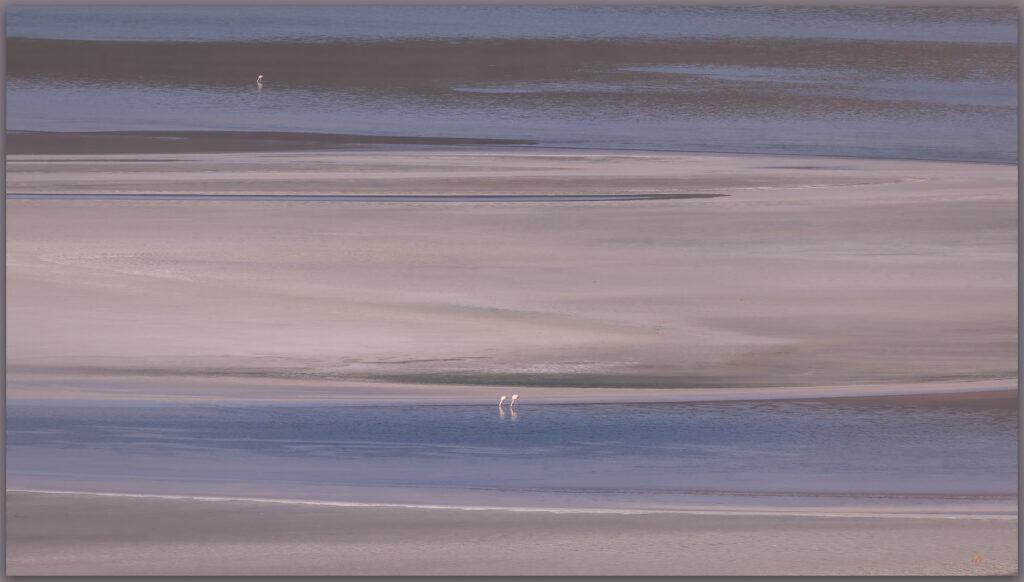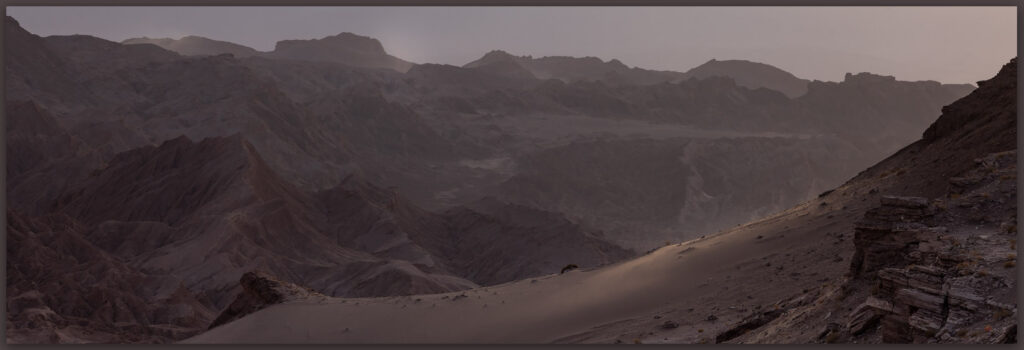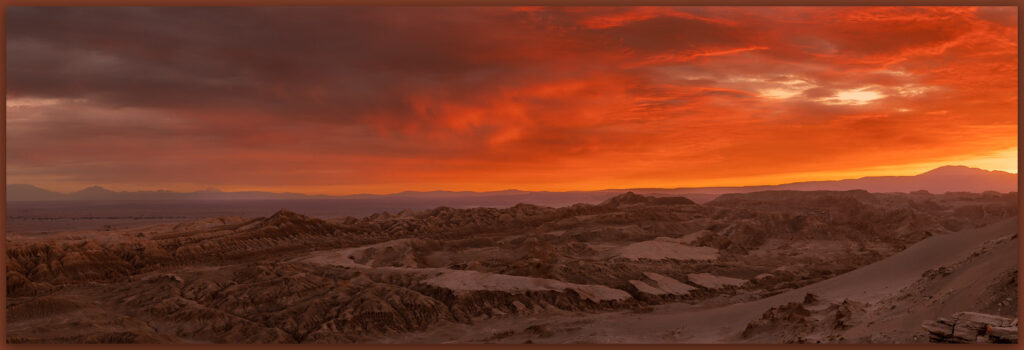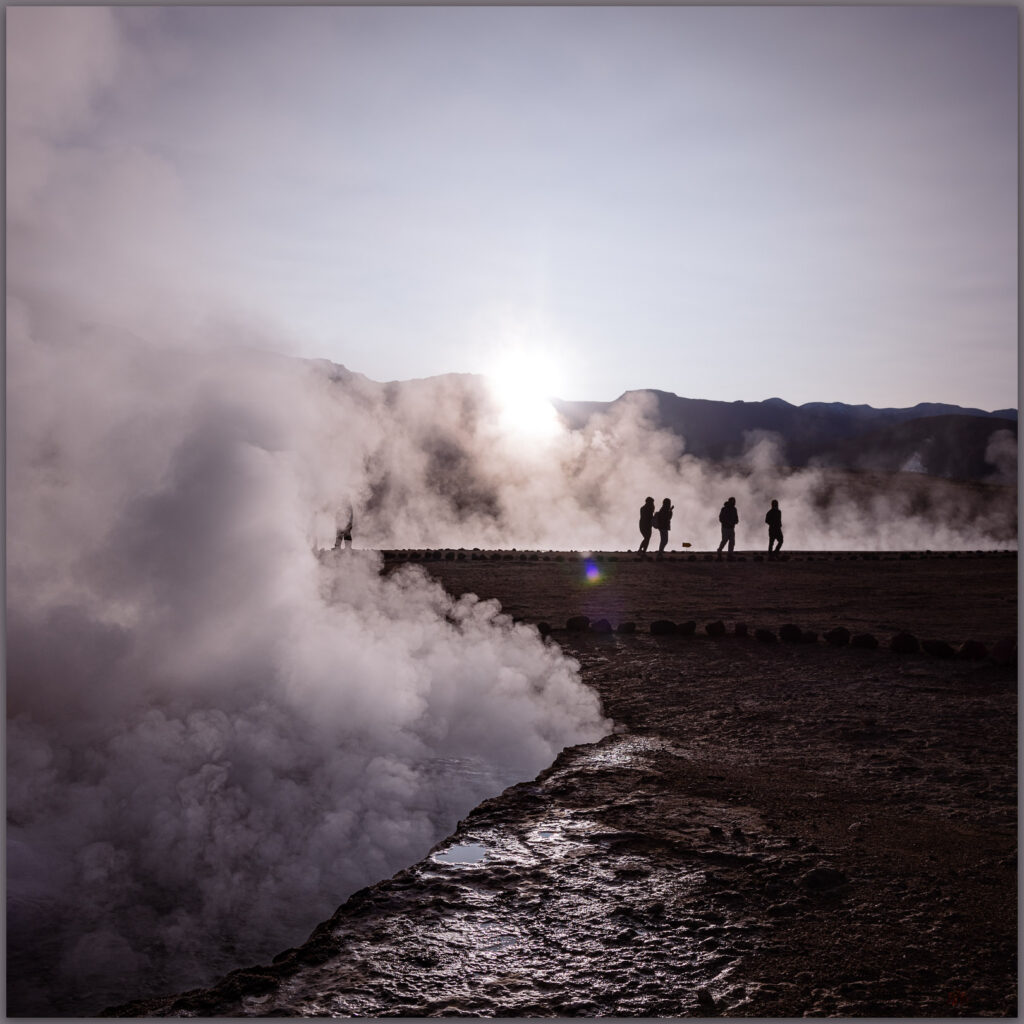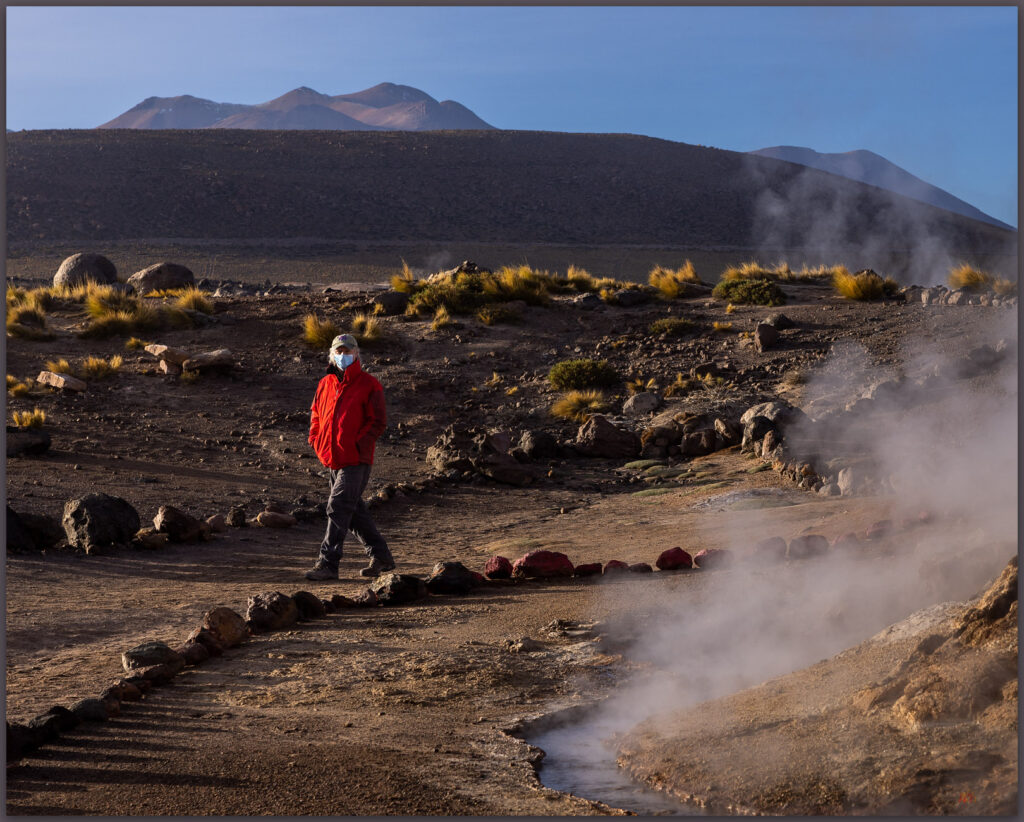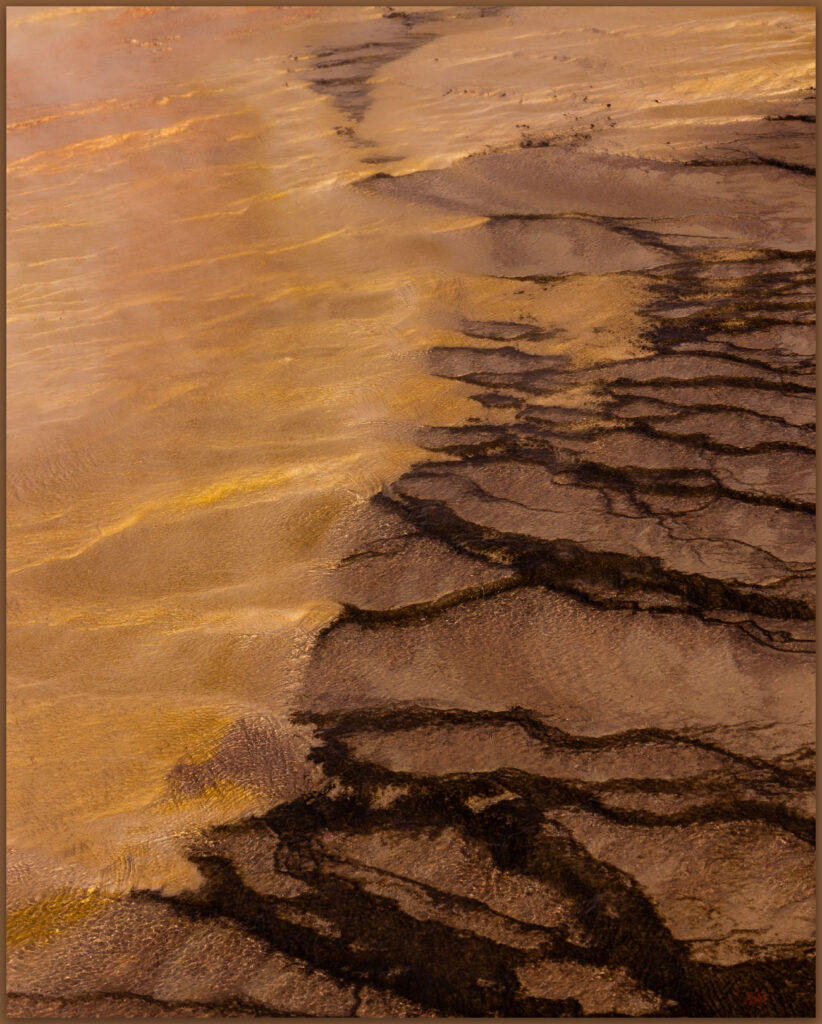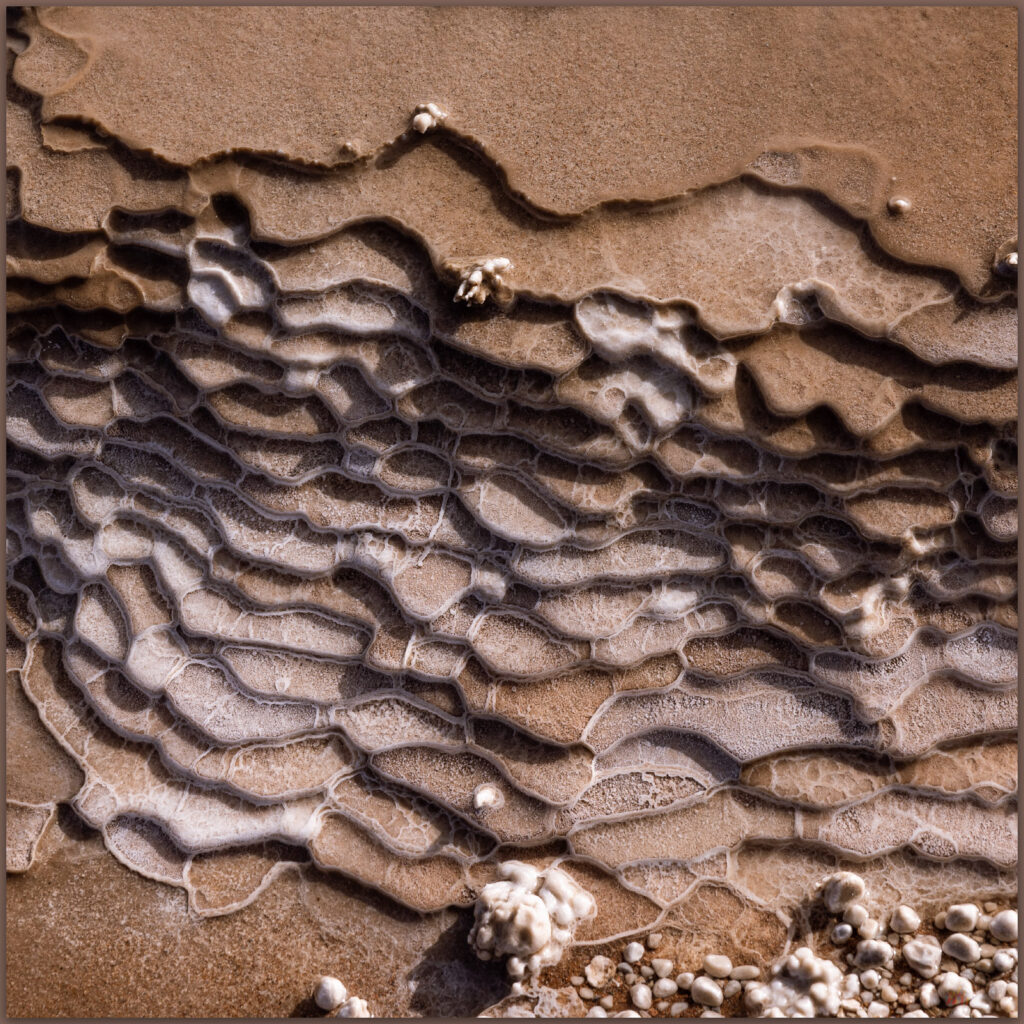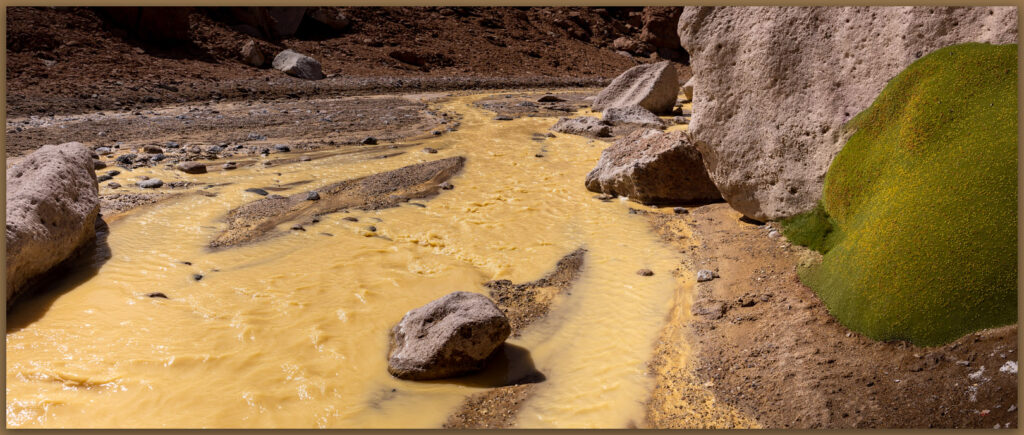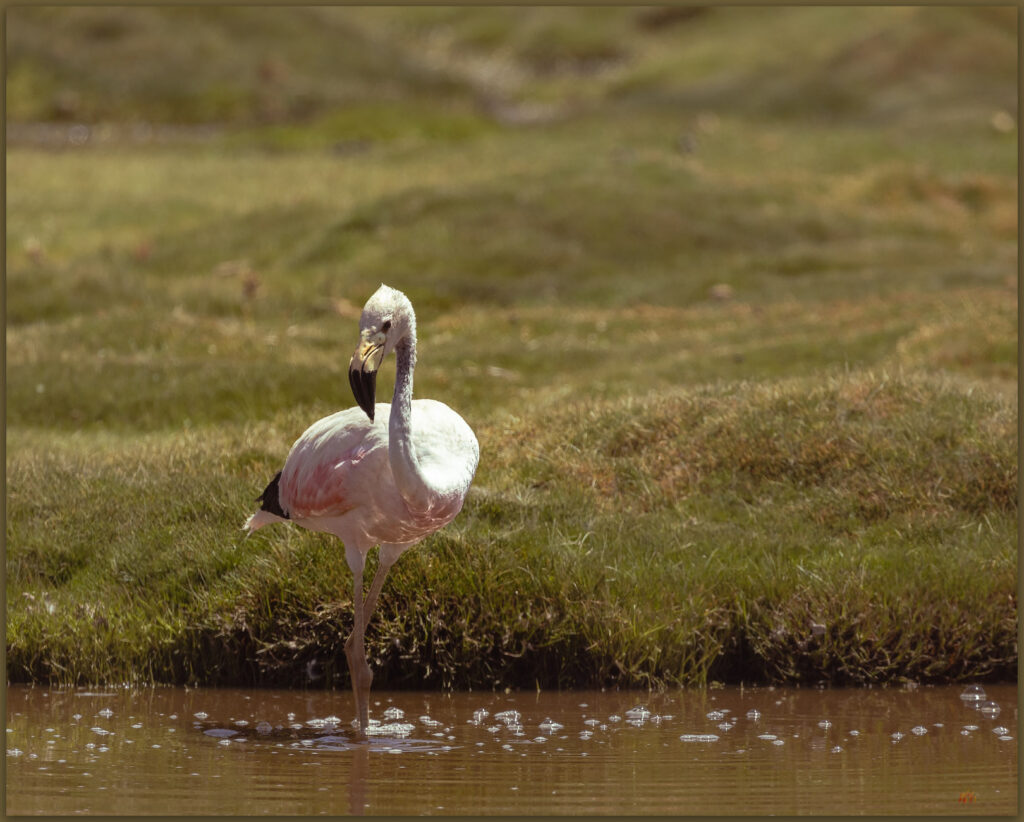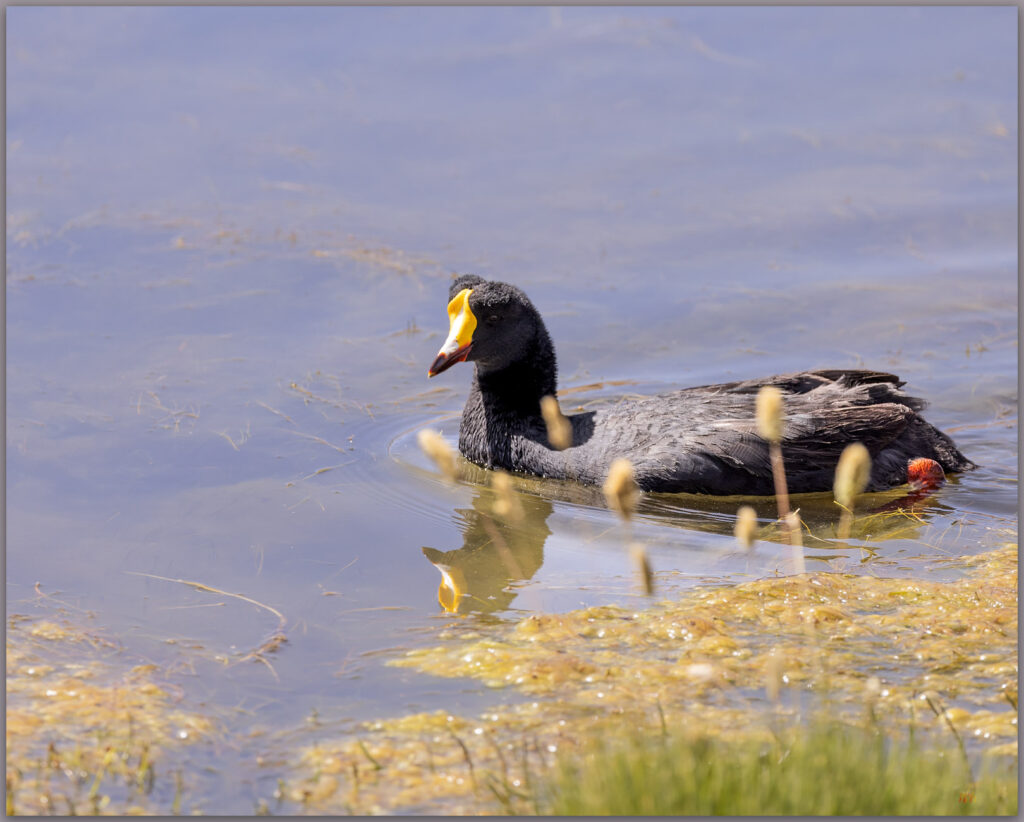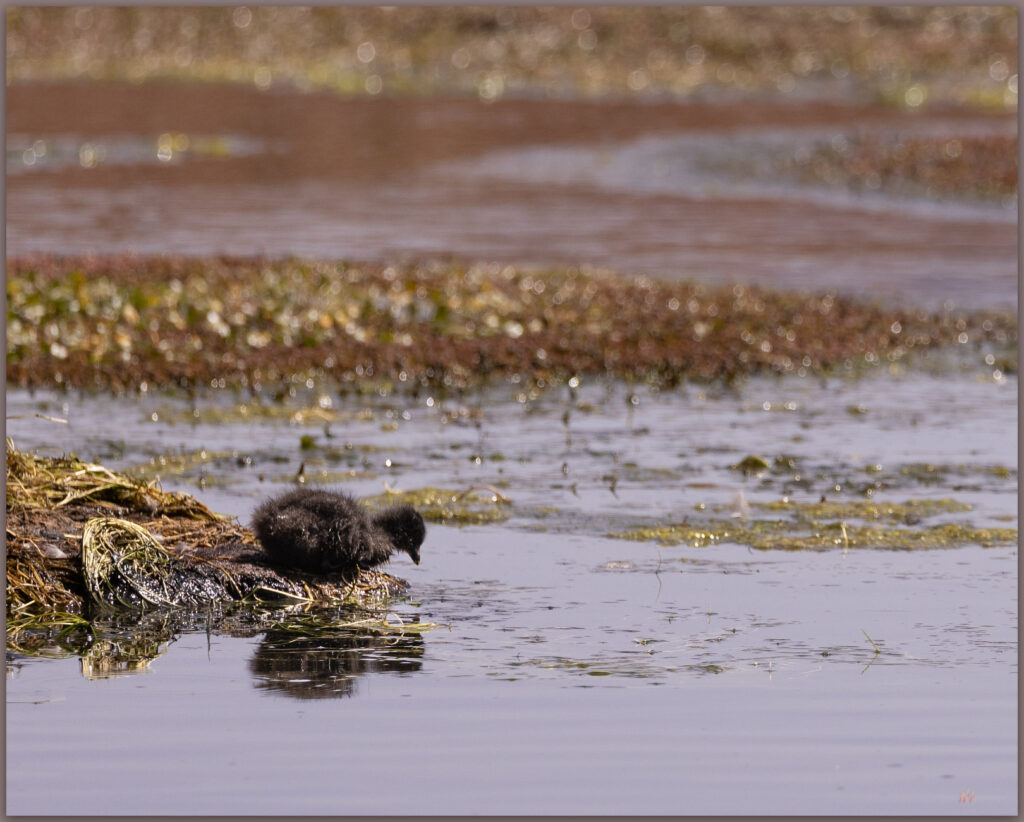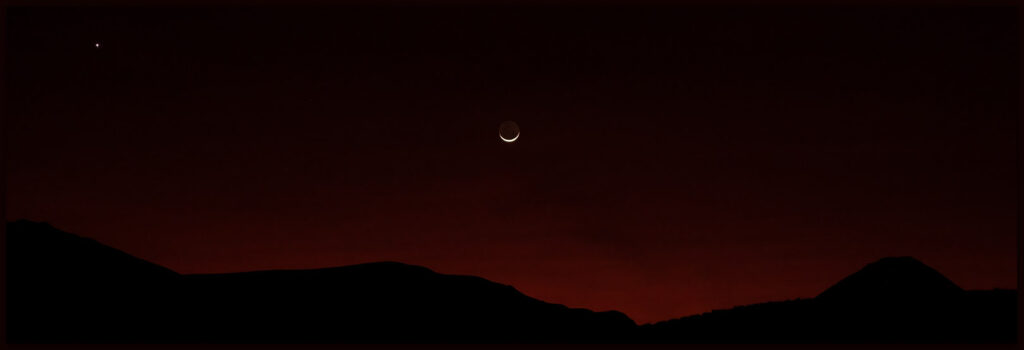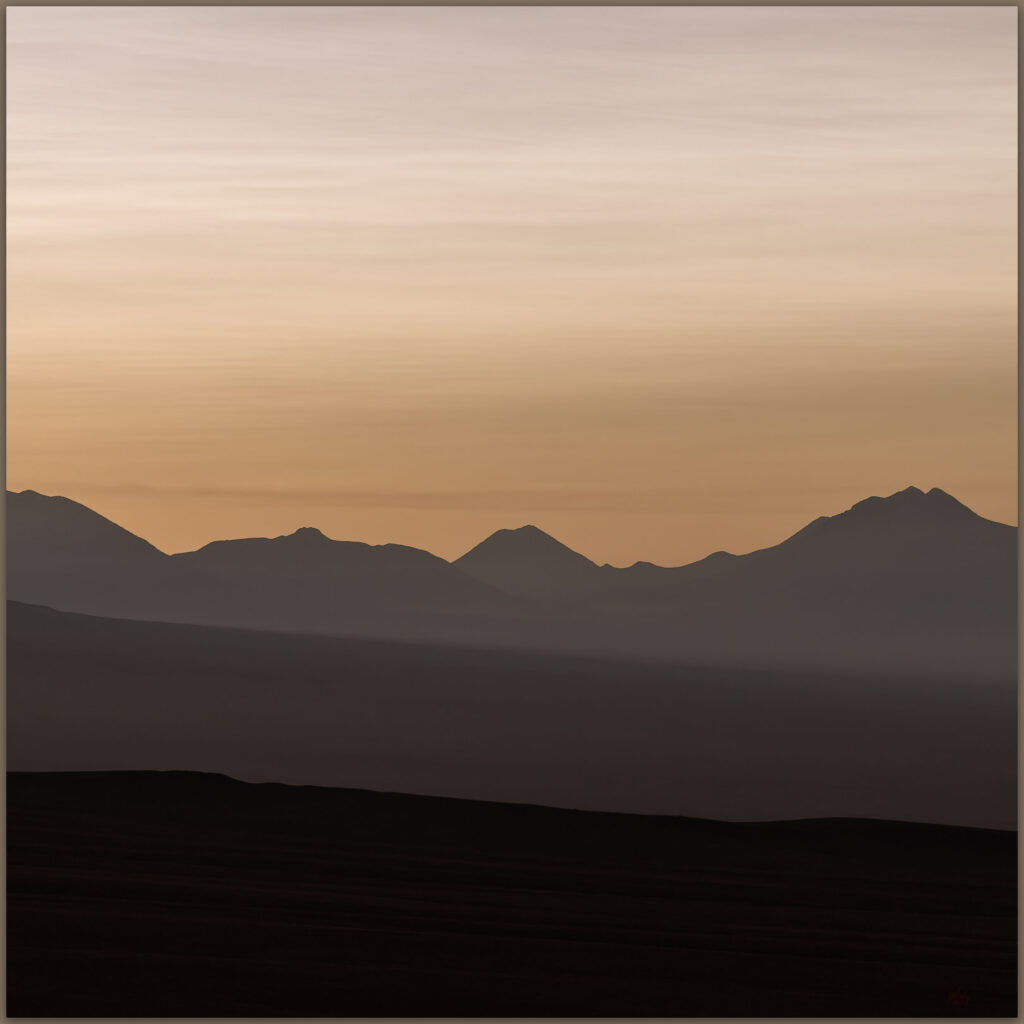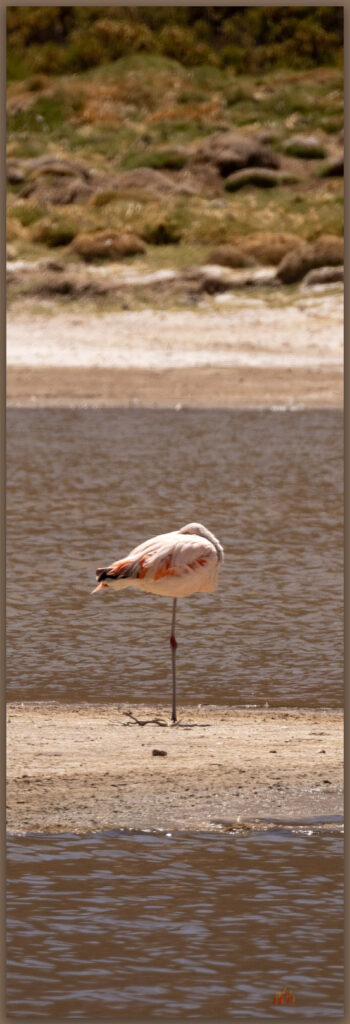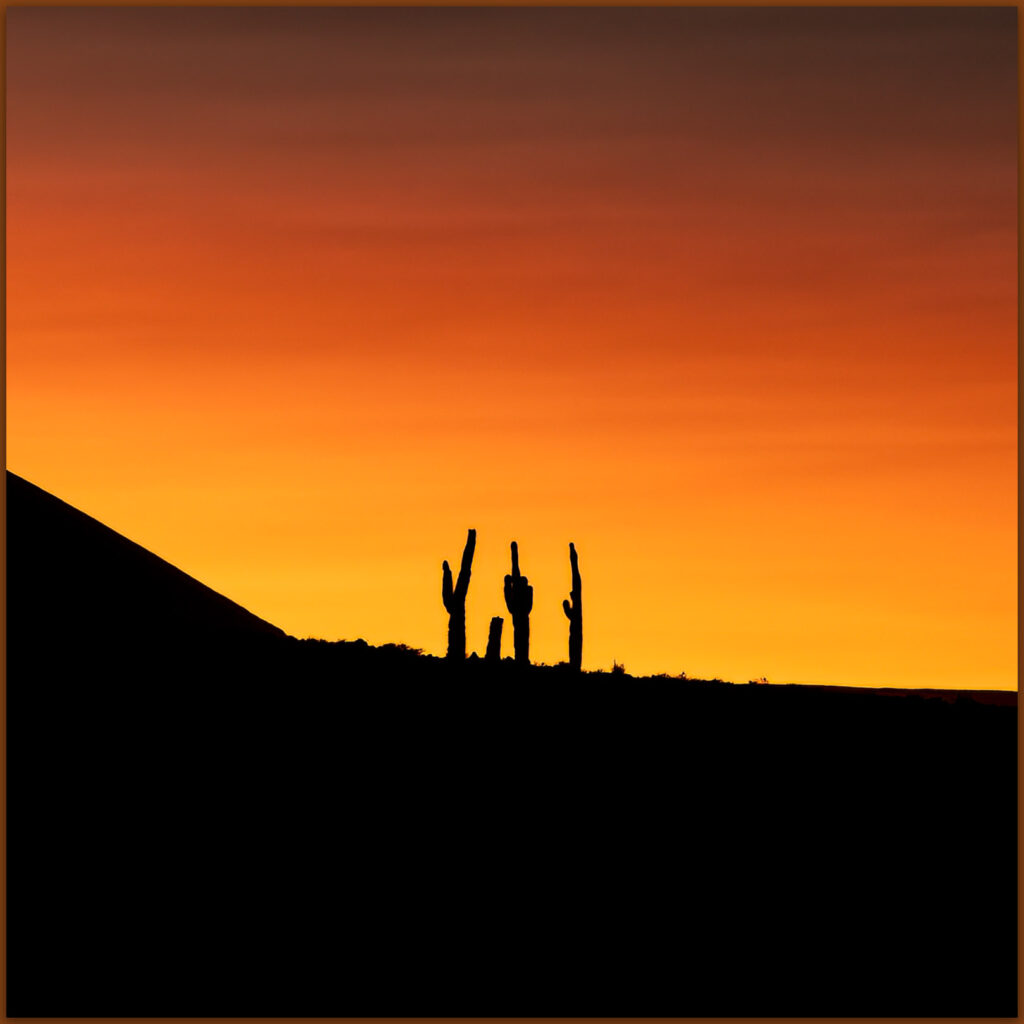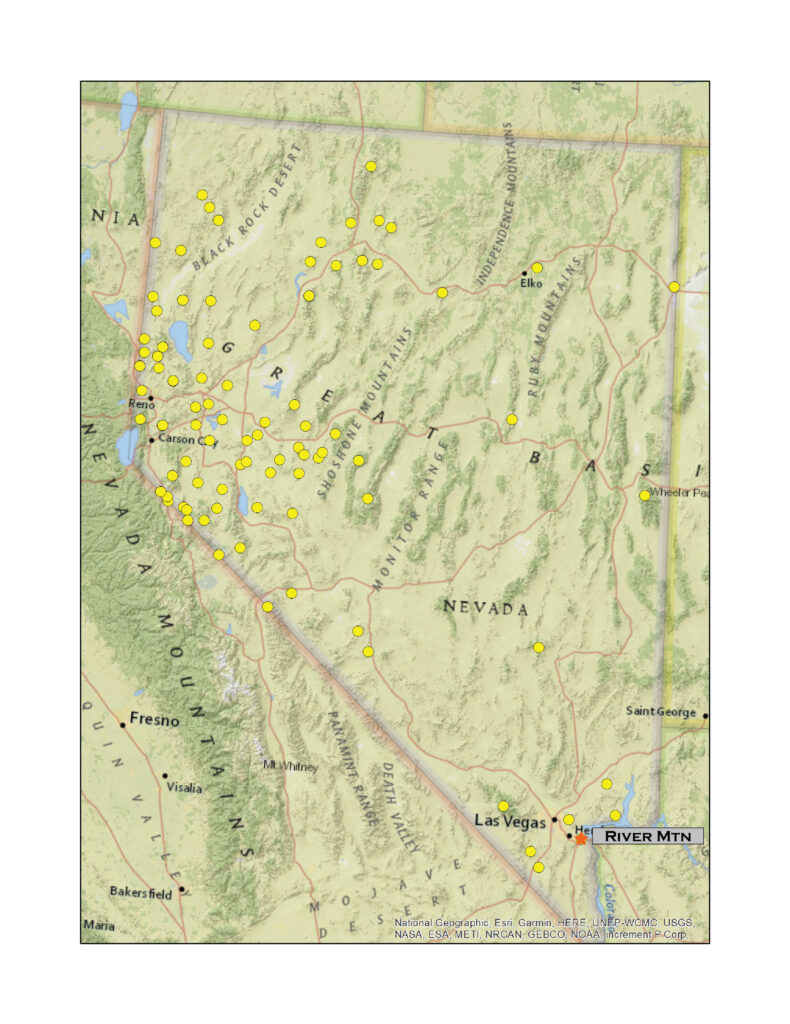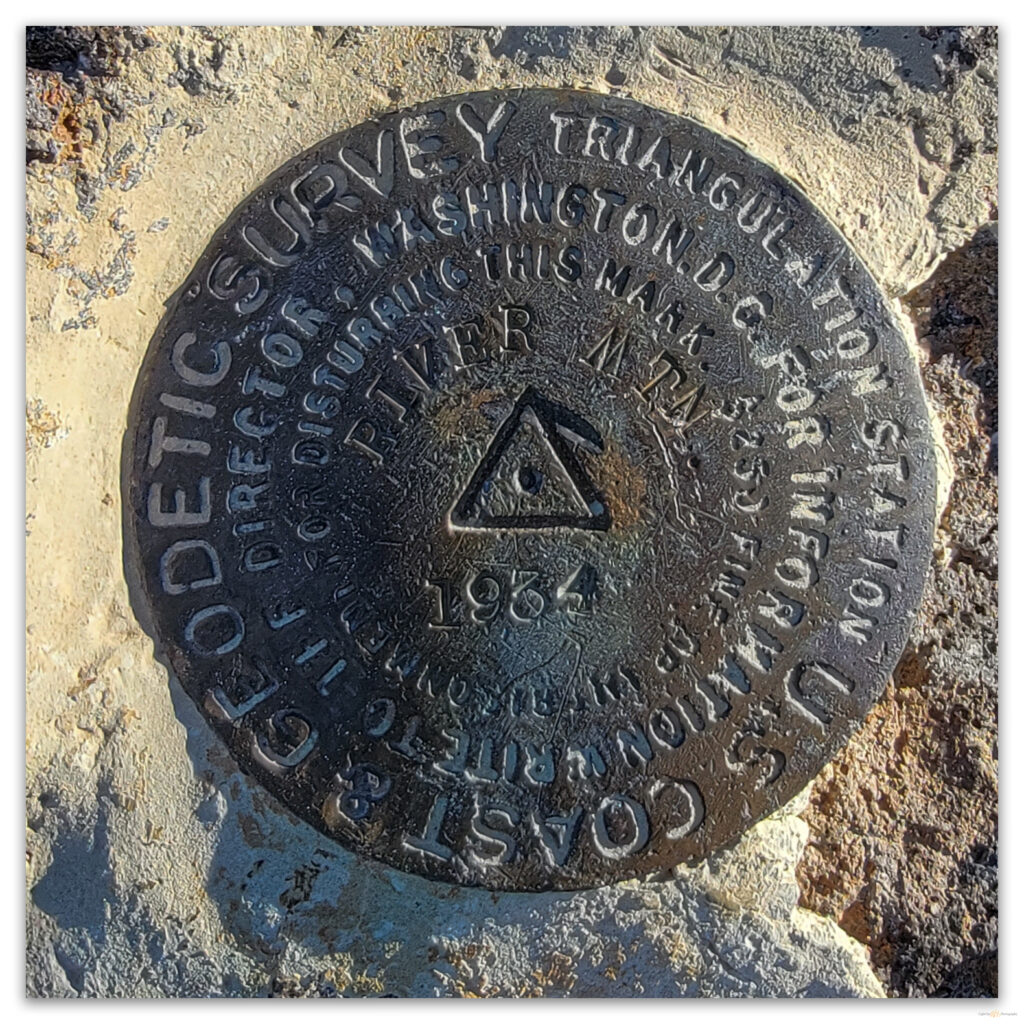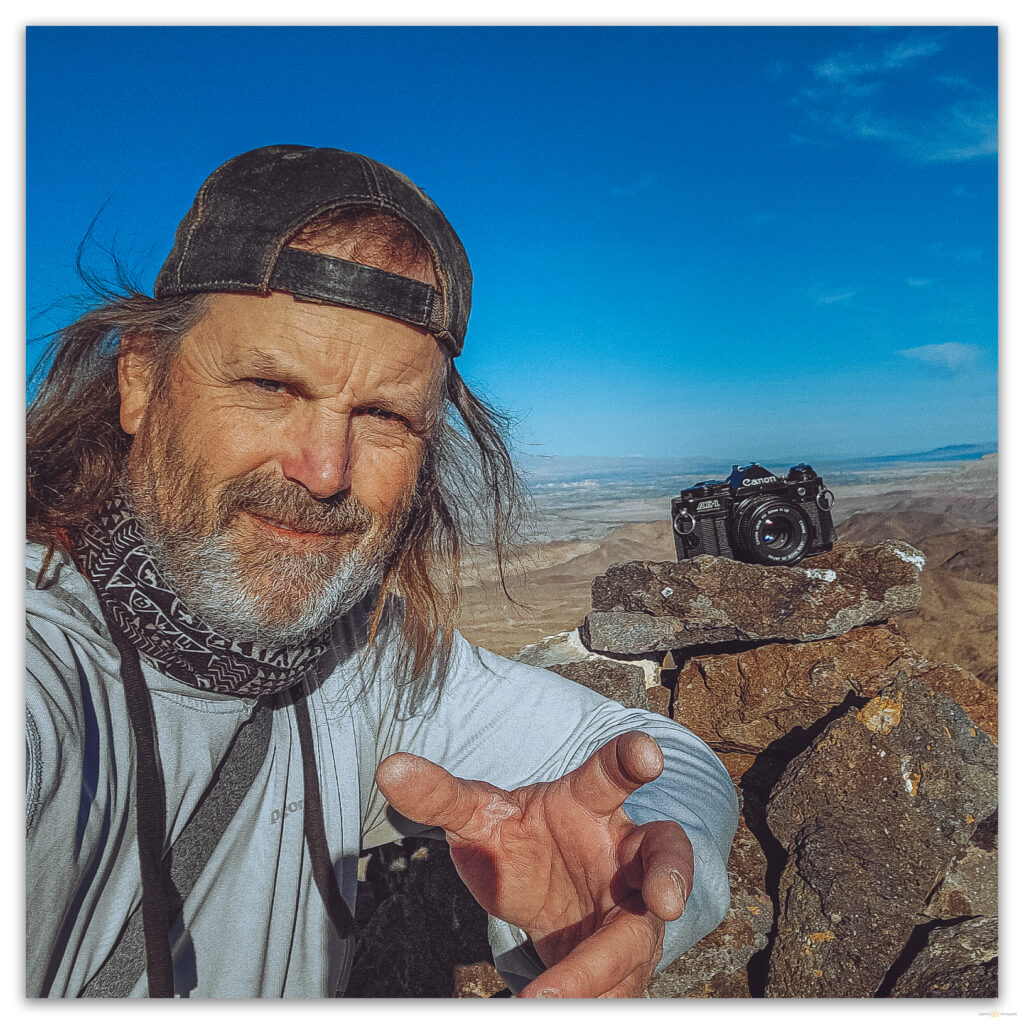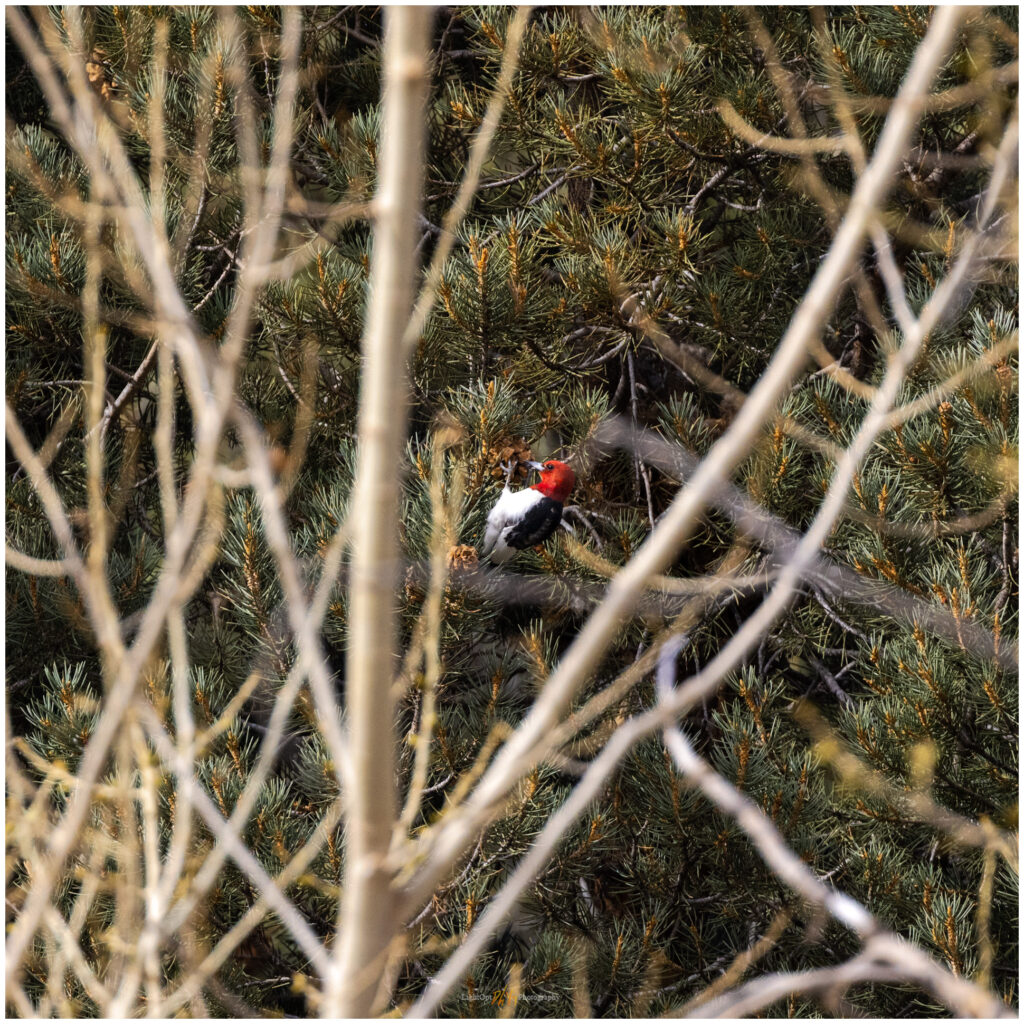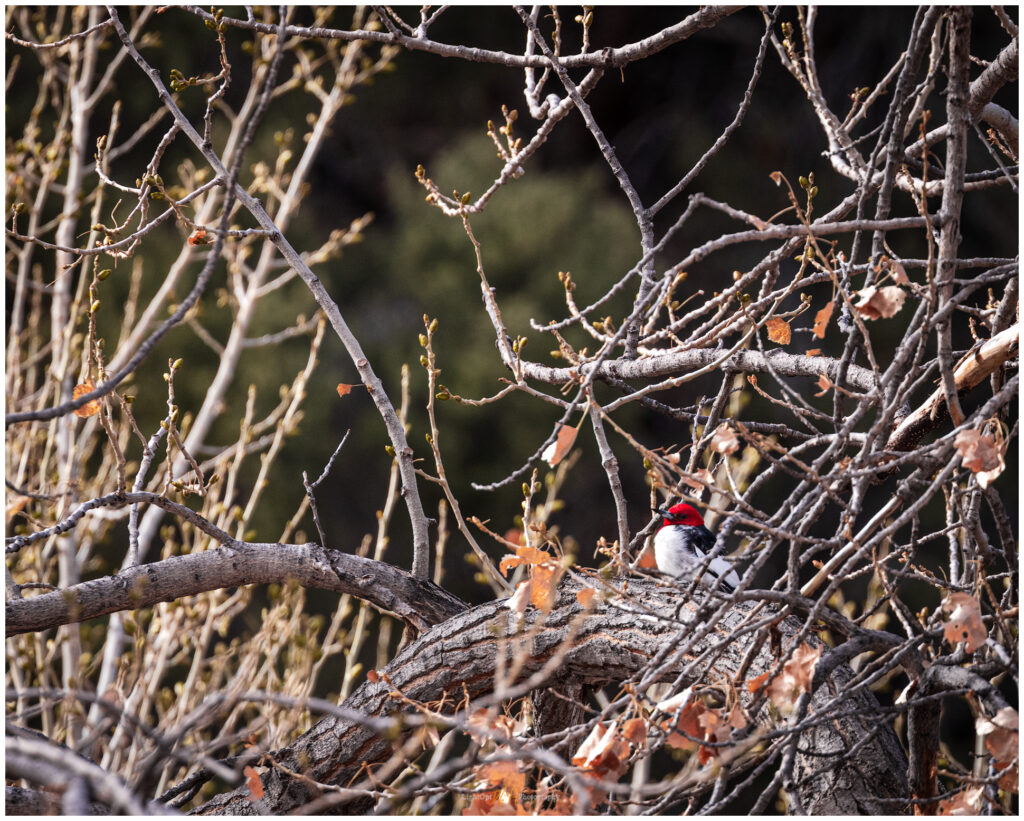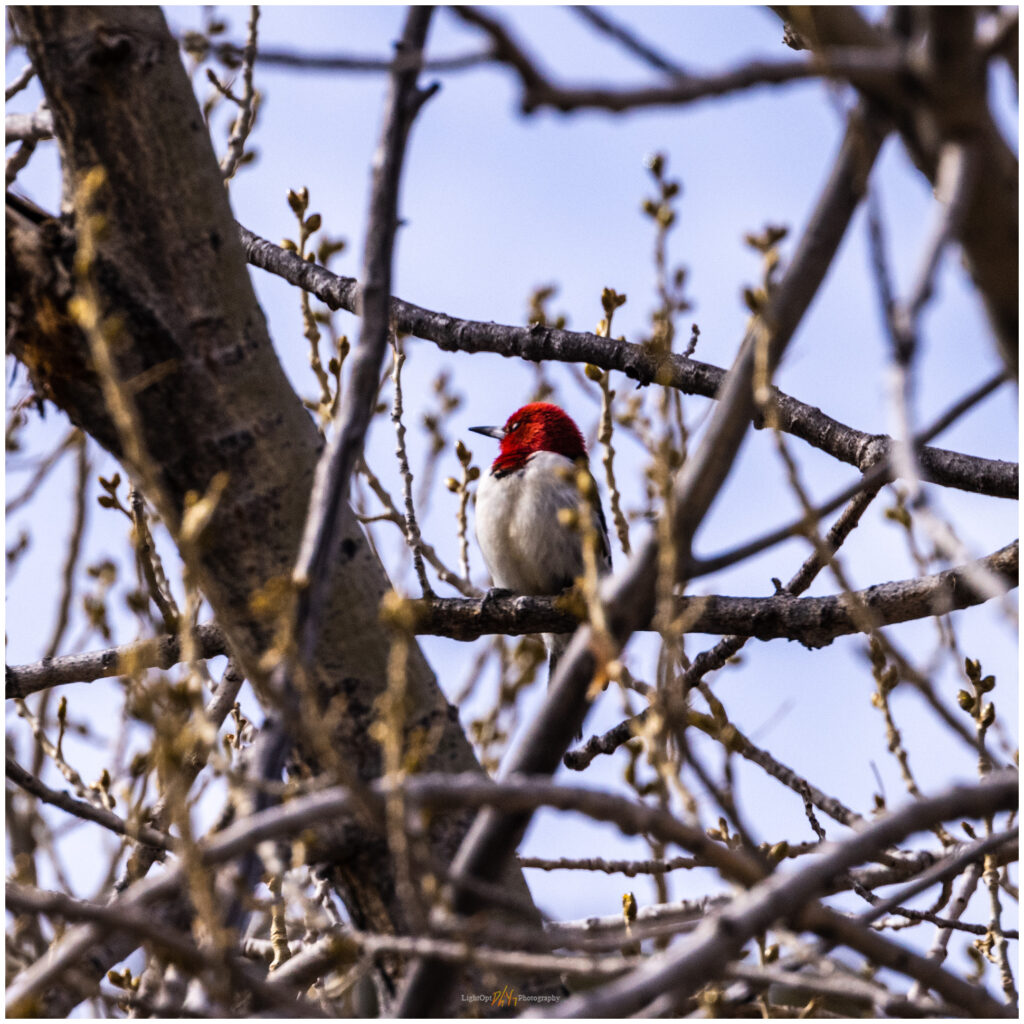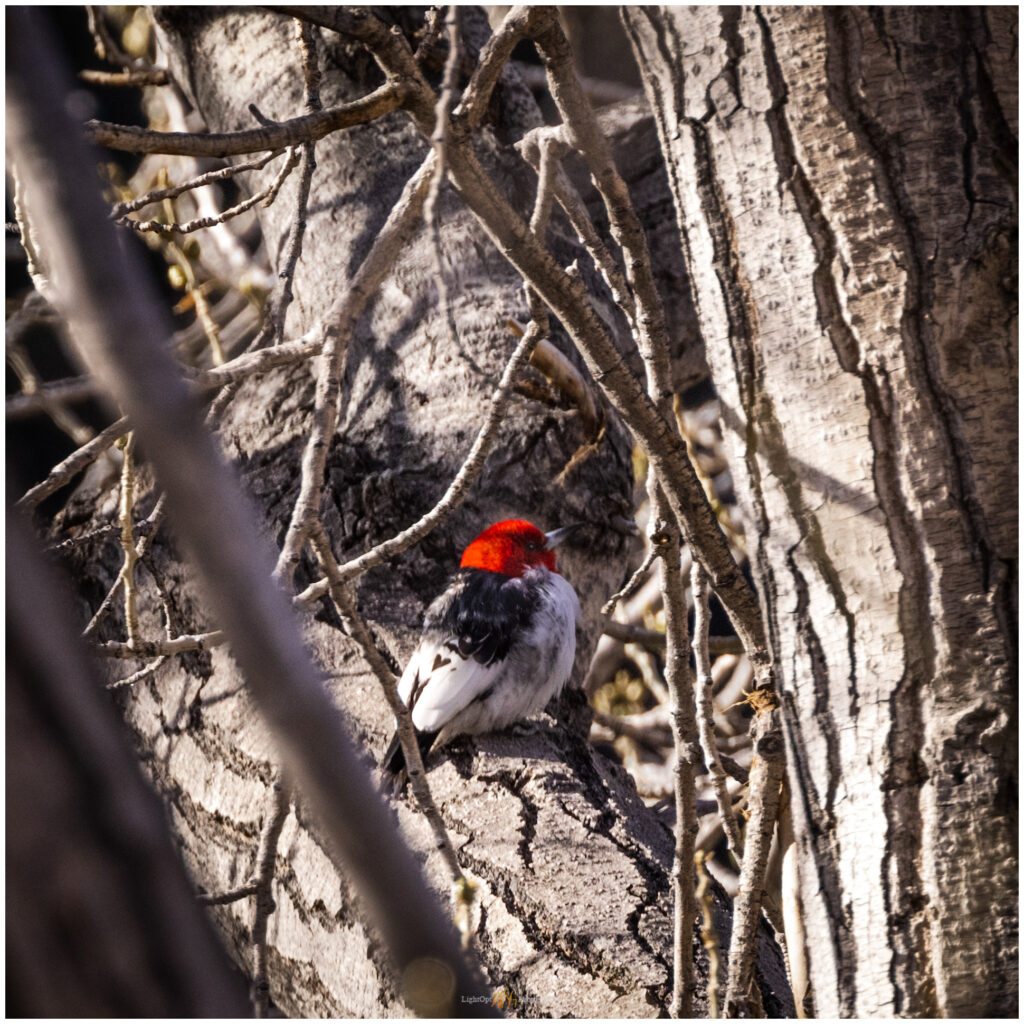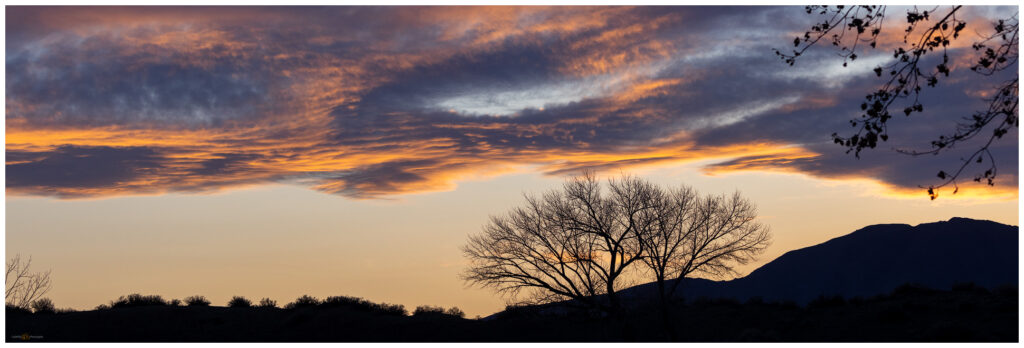With the wilds of Patagonia still fresh in our minds, Bill and I spent a short night in Santiago and then climbed on another Latam flight. We were headed north, working our way up the latitudinal expanse of Chile, exploring the regional extremes from glaciers to desert dry lakes, from sea level to the altiplano with volcano summits at 20,000 feet. And, for a time, we were only slightly higher flying into Calama in the dry heart of the Atacama Desert.
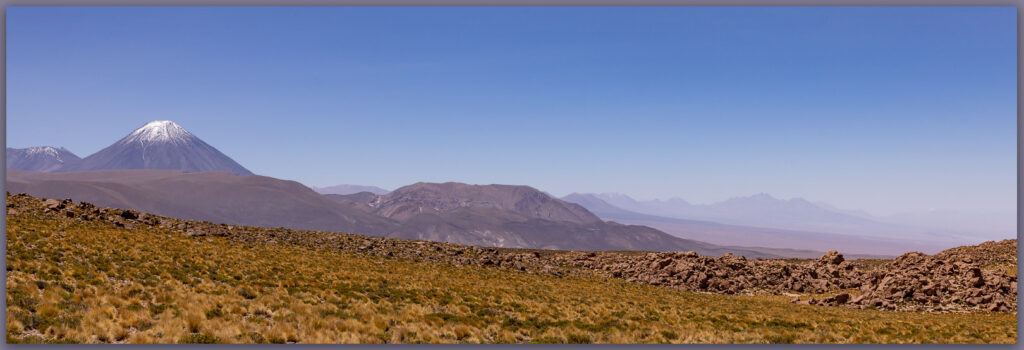
It took quite a while in the queue for a rental, but the little truck was perfect once we got going. I was back in my element, driving desert roads stretching to high horizons, strips of pavement and gravel bounded by salars (dry lake beds) and conical volcanoes. The mountains appear in their simplest form, symmetrical peaks with tonsures of snow, as children draw their first mountain scenes. We based out of the little tourist hive of San Pedro de Atacama; it is the obvious gateway for a short visit to the region, with key tracks leading north and south along the cordillera. While it might not be a wild adventure, it is beautiful way to taste the flavor of the altiplano. Our days do not disappoint.
Traveling in the time of covid presents some obvious difficulties. While Chileans tend to practice good caution and care, with vaccinations and masking required in most spaces, it also means many places are closed. This is especially true for those areas, even if wide-open spaces, managed or owned by indigenous communities where limited access to health services and allowing access to exotic tourists is a bad mix. We realize soon enough that some of our plans for visiting water features – springs and wetlands – that pock the vast valley-bottom salars will not work out. We are adaptable in every way, though I keep having to wake up an oxygen-hungry Bill as we drive roads at an elevation above the highest mountains in the contiguous US.
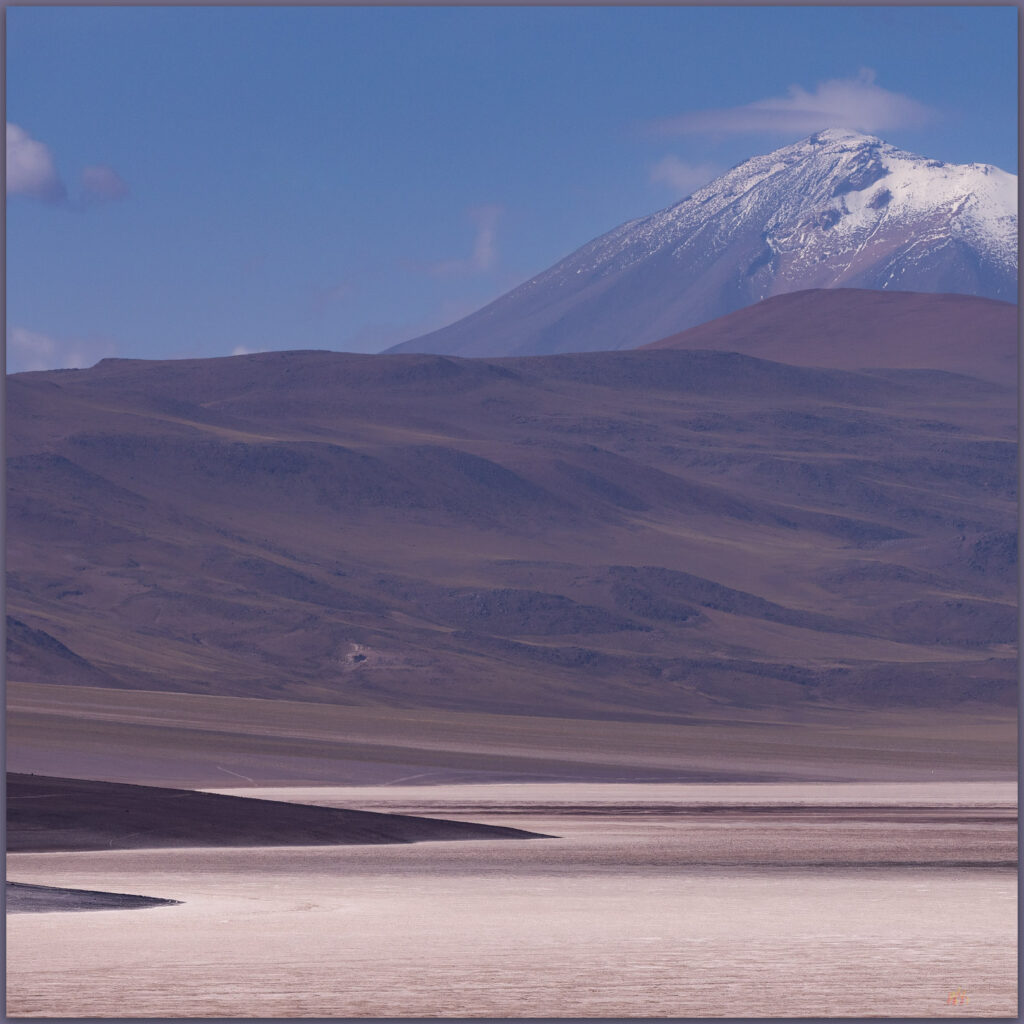
We first explore the region south of the village of Socaire. Our wildlife encounters are fabulous – a fox hunting in coppice dunes and bunch grasses, a family of vicuna cautiously grazing, and flamingos wading in the expanse of Laguna de Aguas Calientes. Our early start allowed us to take advantage of the dusty morning light. Even with the various closures, our first trips into the altiplano were all I had hoped they would be.
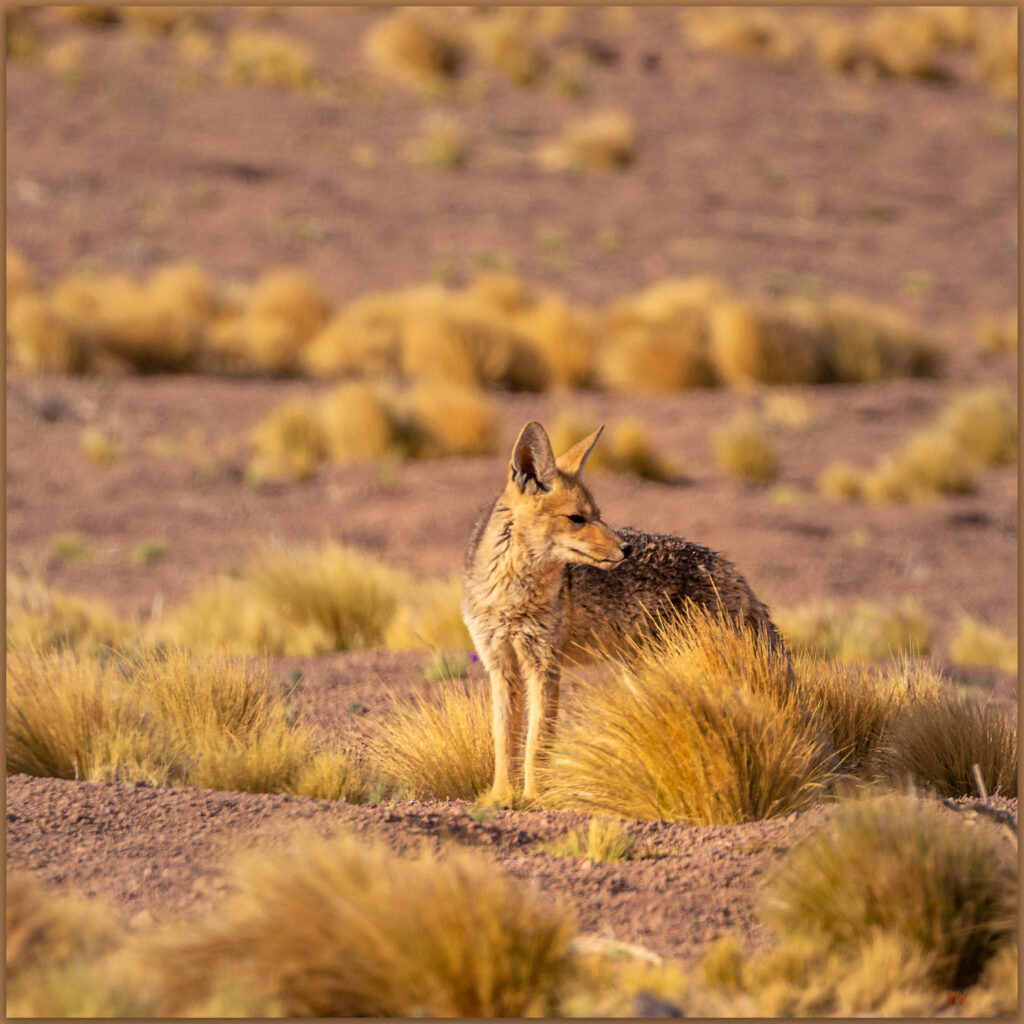
A dusty ambient light around San Pedro had caught my attention on the previous evening, and with today’s addition of low clouds, the evening held promise of a stunning sunset. We found the Valle de la Luna (Valley of the Moon) closed – even its back entrance near Tres Marias was blocked by an ad hoc barrier of boulders – due to covid restrictions, so we wandered various dirt tracks looking for a viewpoint to capture the expansive evening desert. We hiked a short way into the park’s margin and set up on a rocky bench overlooking badlands in washes tributary to the Valle de la Luna. I might have been disappointed that the park and various popular viewpoints were closed, but this allowed us to walk a bit, getting to places we might not otherwise see, and maybe shooting images beyond the obvious. Or so we thought. We were alone when I first set up, enjoying the patient anticipation in the early glow of evening. As our wait continued and the light progressed, however, a crowd grew on the hills behind us, dozens of cameras (phones, of course) pointed in the same direction. We were furthest in, maybe half a kilometer down-canyon, so it looked as if the crowds along the roadside (including several tour buses) had turned out to watch me work the scene. Oh well. The sunset was putting on a splendid show, and, with the closures, this stretch of highway provided accessible theater for everyone – I was happy we had walked in a bit.
Bart met us after we had been in San Pedro for a couple days; his trip paralleled ours for a time after we left Patagonia. Picking him up in the pre-dawn darkness at the edge of San Pedro, our rental truck joined a train of white vans on the highway to El Tatio geyser. Although we had seen clues around town that the geyser trip was popular (and open), we did not anticipate the early morning rush of guided tours. Trying to not submit the rental to an undo beating on the teeth-shattering washboard of the over-used, multi-tracked road to the geyser, I was passed by an incessant stream of vans, sprinters, and buses of various sizes, a long string of red taillights cresting every hill and switchback for miles as we climbed steeply into the darkness. It was not a pleasant drive.
The geysers – after one navigates the various covid sign-ins – are fascinating and it is a nice walk on the necessarily restricted trails of the park. If there is an up-side to tour groups, it is that they seem to be built on rather strict itineraries, so the groups move quickly through the ‘attraction’ and move on. I’m not sure where they might go next, but not long after sunrise (the promise of the ‘sunrise geyser tour’) the trails empty rather quickly. And, not very long afterward, as the day warms and the steam clouds that highlight the geysers and pools dissipate, the park basically closes. Nothing to see here, I guess.
With the tours departed for somewhere and someone else’s great attraction, we have the road home to ourselves. This is the highlight of the day. We stop often, looking for little groups of vicuna on the dry hillsides and wandering among the few isolated wetlands to see birds mostly foreign to us. It takes us quite a while to get back to town where our usual cantina and siesta await.
A pleasure during the day, the drive also highlighted a location or two that would provide good foreground for night-sky photography. With this long-held goal in mind, I picked up Bart at 3.30 AM the following morning; Bill wisely chose not to join at this ungodly hour. We retraced the geyser highway, but we beat the rush and were alone. I had chosen a canyon near the village of Guatin, hoping to get a foreground with cardon cacti spread among red-rock outcrops. We walked into the spooky shapes making sure not to wander off any cliff-edge; the southern milky way and Magellanic clouds glowing above us. The nightscape of the Atacama Desert is unequaled, it was almost tactile. While my technical skill at astrophotography is lacking, it was a pleasure spending this time with Bart marveling at the sky, trying different compositions, and laughing as the bolus of tour buses motored by on their way to another El Tatio sunrise. My resulting images did not work for various reasons, mostly because I failed to capture any foreground, but one or two provide memories of the amazing night above San Pedro de Atacama. Our galactic pleasure was followed by the appearance of a new moon and Venus leading to a dusty sunrise above Andean volcanos. Was this really my last day here?
It was, all in all, a short desert excursion; our four days were not nearly enough to get to know anything about this great landscape, much less of its wild interior. The magnetic attraction of this desert will have a hold on me for a long time, and its pull will allow me to plan for a deeper, slower visit when (if) possible. Bill and I left Bart to his worldly travels and returned to Calama to catch our flight out. And yet, the journey had one more surprise in wait for us.
Once back in Santiago, we made our preparations for our outbound flights. This included the requisite covid test, available conveniently, as planned, at our hotel. We lunched and watched sub-titled movies waiting for our results. When my phone lit up with the negative notification, I was ready to go. Bill, however, stared blankly at his screen; he was covid positive. Now what? How could I be negative, having traveled with him for so many days, in such close quarters? He had no apparent symptoms, but we decided quickly that I should get a new room so he could isolate. The hotel was very accommodating; I moved down the hall, and Bill began the process of re-testing in case of a false positive. Bill is a very experienced traveler and though cautious, was not overly concerned – he encouraged me to continue with the planned itinerary. My wife and doctor – two people – thought that if I was going to present symptoms, it would be better for me to get home to deal with them; it seemed even more likely that I managed to dodge the viral bullets shot at me. I would travel home carefully. Yes, I had been in close proximity to Bill over many days, but with the news of rising variants, it seems travelers are likely in proximity to positive fellow travelers (and so many others), knowingly and unknowingly, throughout any trip. It is clearly going to be common characteristic of travel, especially air-travel, now. The vaccinations and boosters are the best things we have for keeping us going. So, with Bill’s zen attitude and approval, I boarded our scheduled late-night flight home. He would stay isolated in Santiago for an additional week, until a negative test allowed him to reschedule his flights home. If not asymptomatic, his brief encounter with the virus was barely noticeable, he says. Our two-legged itinerary – Patagonia and Atacama – had thrown a final curveball at us, but we made it home without too much inconvenience, though Bill got more room-service meals than expected (or usual).
Looking back, I realize we had the good fortune to experience the edges of only a fraction of the amazing wild lands of Chile, getting powerful glimpses of the interface between these spaces and the indigenous, development, and tourist economies that try, along a vast continuum of success and failure, to accommodate those remnants of the wild and natural world. It is good to walk among the wildness, even if at its edges, and to seek some way to communicate this struggle – I travel to learn, experience, and document, but this trip has made me strongly consider, maybe reconsider, my role in the struggle. I have few answers at this point; I’m hoping that that awareness leads in a helpful direction and, sometimes, maybe that is enough.
Keep going.

